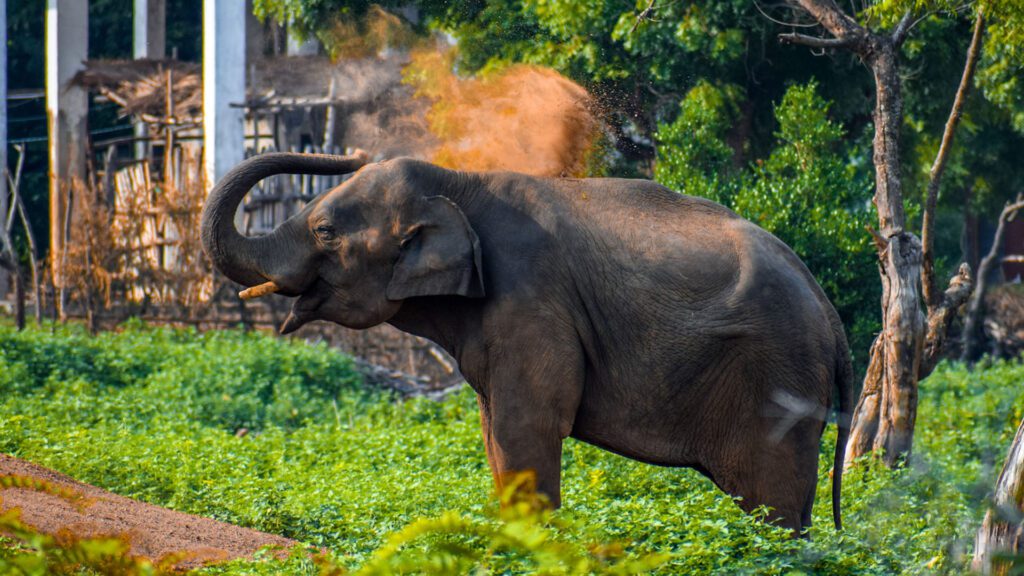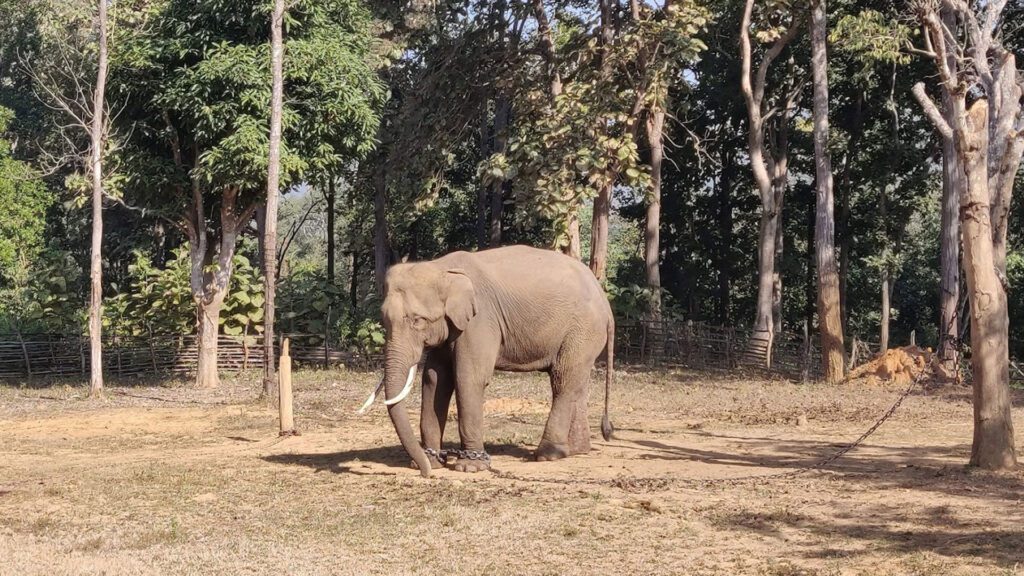Dampara Elephant Wildlife Sanctuary, Odisha, located on India’s eastern coast, is blessed with a rich natural heritage of forests, rivers, and wildlife. As part of its efforts to conserve this precious biodiversity, the state government has established several protected wilderness areas for endangered animal and bird species. One such critical wildlife sanctuary is the Dampara Elephant Reserve, tucked away in the Chandaka forest range near Khordha district.
History and Background
The Dampara Elephant Sanctuary was set up in 2002 to provide a safe habitat for endangered Asian elephants in Odisha. Spread over 120 square kilometers, this reserve forest is managed by the state’s Forest Department with support from the Wildlife Wing. The objective is to protect the wandering elephant herds in the area and minimize human-elephant conflict.

Today, Dampara is home to over 50 majestic elephants who roam freely in picturesque surroundings. Adjacent to the Chandaka Elephant Sanctuary, Dampara forms an extensive protected zone for these gentle giants. However, threats like poaching, dwindling forests, and habitat loss continue to pose challenges.
Location and Geography
Dampara Elephant Reserve is located around 60 km from Bhubaneswar, the capital of Odisha. Set amidst the scenic Chandaka forest range, the terrain here is typical of the eastern ghats – ranging from small hillocks and valleys to plains and water bodies. The sanctuary includes the catchment areas of several streams as well as hill slopes and plateaus.
The rich vegetation cover is primarily moist deciduous forest, with species like sal, cashew, mango, and jackfruit. There are also patches of pristine bamboo thickets. This diverse habitat nurtures not just elephants, but also spotted deer, sambar, barking deer as well as sloth bears.
Flora and Fauna
In addition to elephants, Dampara teems with other wildlife including gaurs, four-horned antelopes, jungle cats, hyenas, porcupines, and pangolins. Reptiles like pythons, cobras, and monitor lizards are also found here. The birdlife is equally vibrant, ranging from peacocks, jungle fowl, and hornbills to parakeets, bee-eaters, and egrets.

The moist deciduous forest cover provides ample fruit and fodder for the wildlife. Sal is the predominant tree species along with cashew, mango, and jackfruit. The streams and waterholes dotting the sanctuary provide water for the animals. Overall, Dampara has a thriving ecosystem to sustain elephants and other wildlife.
Visitor Information
Dampara Elephant Sanctuary offers a unique opportunity for nature lovers and wildlife enthusiasts to observe Asiatic elephants in their natural habitat. The best time to visit is November to June. Entry permits are required and can be obtained from the Divisional Forest Office in Khordha.
Visitors can explore the forest areas on elephant safaris organized by the forest department. While here, it is essential to maintain silence, refrain from getting too close to the elephants, and avoid any sudden movements or feeding the animals. Littering is strictly prohibited.
For accommodation, the nearby town of Khordha has several mid-range hotels and lodges. The OTDC Panthanivas is a good budget option. Bhubaneshwar, just 60km away, offers more stay choices.
Challenges Faced
Despite conservation efforts, Dampara continues to face several challenges. Rampant poaching for ivory earlier had led to several elephant deaths. Though controlled now, threats from smugglers persist. Human-elephant conflict also sometimes occurs when elephants stray into nearby villages. Deforestation and mining in the area have fragmented wildlife habitats. Lack of adequate funds affects maintenance and protection efforts.
To tackle these issues, the forest department has increased patrolling and checkpoints in vulnerable areas. Awareness campaigns urge local communities to support conservation. There are also plans to expand the sanctuary area and water sources to reduce animal intrusions into human settlements. Going forward, increased eco-tourism combined with public participation can aid Dampara’s conservation.
The Road Ahead
Dampara Elephant Sanctuary is a shining example of Odisha’s efforts to protect its natural heritage. This sanctuary provides a safe refuge to endangered Asian elephants while also conserving the diverse flora and fauna of Chandaka forests. With expanding ecotourism, stricter protection strategies, and the involvement of indigenous communities, the future looks positive. Visitors from across India and abroad must come and explore Odisha’s wilderness gems like Dampara, where majestic elephants roam free’s abode. Seeing these gentle giants in their natural habitat is an unforgettable experience.
Tourist Facilities, Transportation, Tourist Attractions, How to Reach, Accessibility
Open Timings
Chandaka Dampada Sanctuary opening time is Monday to Sunday 10:00 am to Evening 5:00 pm
Best Time to visit
The best time to visit Chandaka Dampada Sanctuary is all time of the year
Closest Bus Stop
The Closest Bus stop is Baramunda, which is located around 5 KM distance from Chandaka Dampada sanctuary
Closest Railway Station
The Closest Railway Station is Bhubaneswar, which is located around 17 KM distance from Chandaka Damapada Sanctuary
Closest Airport
The Closest airport is Biju Patnaik International Airport, Bhubaneswar, which is located around 17 KM distance from Chandaka Dampada Wildlife Sanctuary





